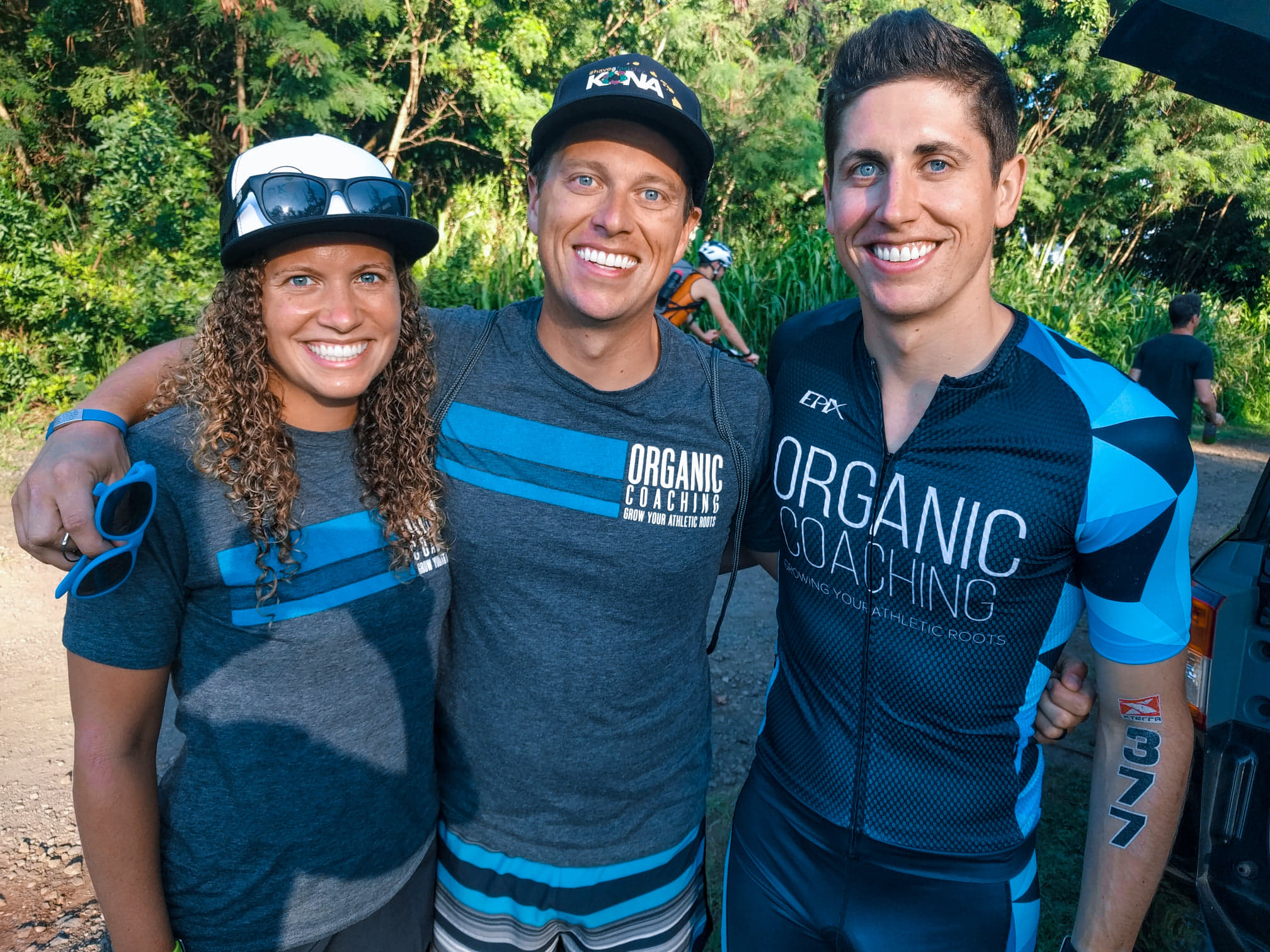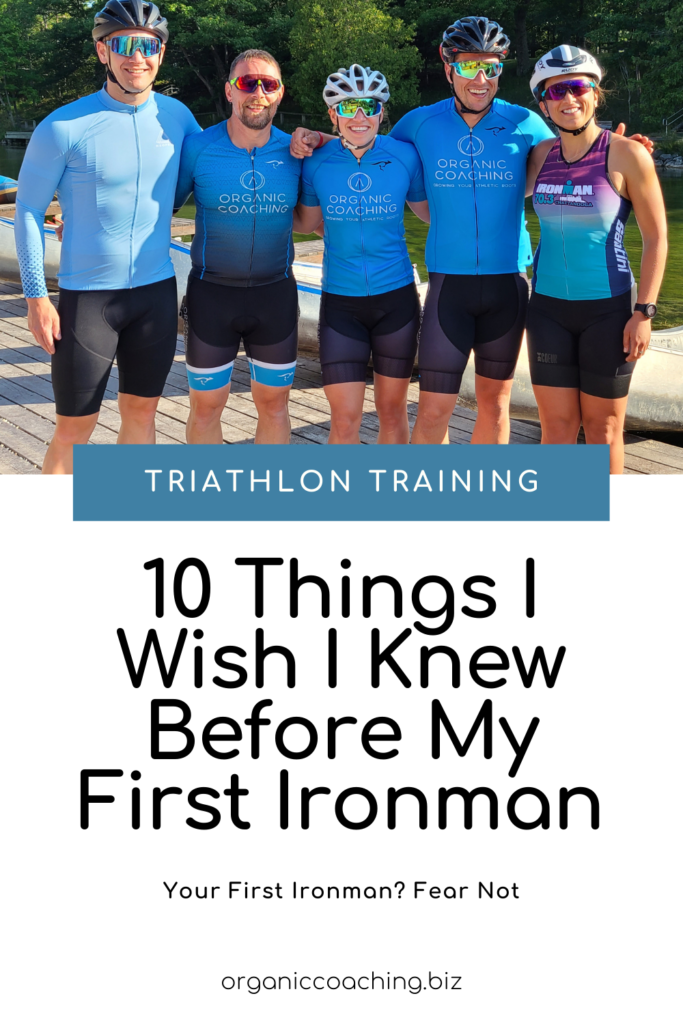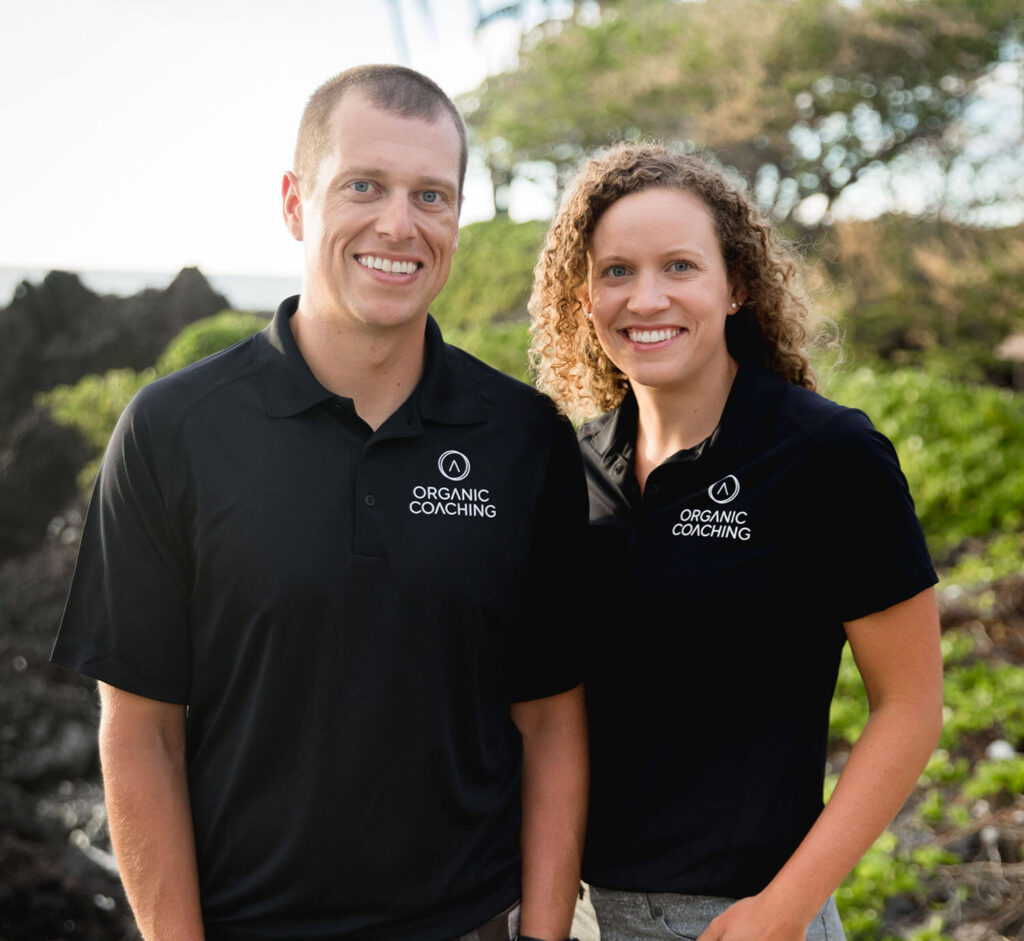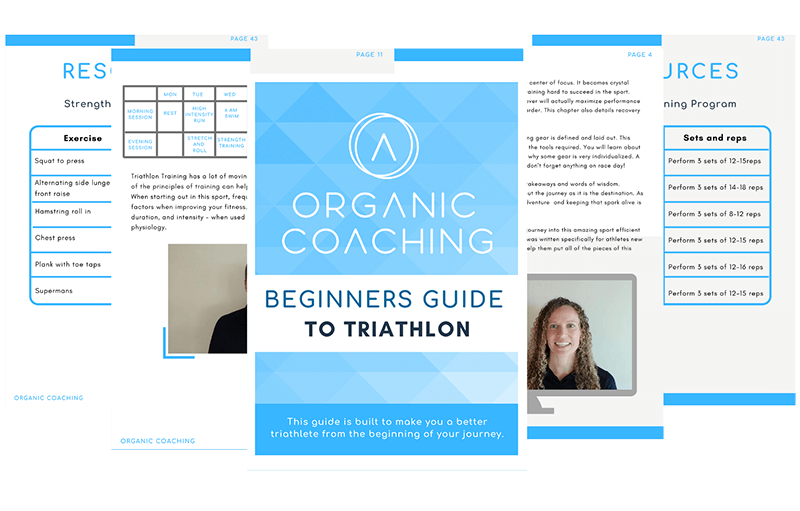

So, you’ve decided to embark on the journey toward your first Ironman? Congratulations! I can guarantee this will be such a rewarding and empowering experience. Not only are you on a path to being as fit as ever, but you’ll also witness countless triumphs and breakthroughs. Both physically and mentally, firsthand! Alongside that excitement and energy, you also almost immediately after signing up might be thinking, “what have I done?!” or “how am I going to do this?.”
Trust me, I’ve been there…the good news is all of these thoughts are normal, natural, and quite wise. Ironman is an endeavour not to be taken on lightly and much of this inclination is based on the fear of the unknown. Do I have enough time? What if I fail? Will I be strong enough, or too slow? How do I even approach this thing?
Today, I’m sharing 10 ideas to make your first Ironman more approachable and enjoyable!
It’s easy to get caught up in finish times, age group placements, splits and glamorous finish lines. While those aren’t bad things inherently, they can often overshadow the joy of putting in the work. Or worse, discourage you from tackling the work. When we dwell on some future outcome or anticipate what will or could happen it can be disheartening at best or paralyzing at worst. And when unchecked, our minds can convince us that the goal is unattainable.
Alternatively, giving each training week and training session our undivided attention instills in us the confidence that we’re taking the actions necessary to lead to a positive end result. So, as you take on your first Ironman, keep the outcome in mind. Instead, fall in love with the training process and devote your attention to winning each day. Knowing that the best outcomes derive from small, incremental steps.
An Ironman is really hard, there’s no way around it, but there’s a reason you’ve decided to tackle it. Whether it’s fitness and health or to grow your confidence and belief in yourself. Whatever the motivation, you might now be facing 4-6 months of difficult training and the anxiety is building. The physical and emotional responses we have for fear and excitement are nearly identical, your heart rate might go up, or your hands get a little sweaty. Acknowledge them when they arrive and learn to harness that nervousness into excitement and anticipation. Recognizing you’re not in danger but you’re excited, and you’re doing what you love! Then re-read tip #1 above and let the process be your guide!
We’ve all heard it said, “it’s not a sprint, it’s a marathon.” Truer words have never been spoken when it comes to Ironman. Efficiency and energy conservation is the hallmark of a successful Ironman. There is certainly a place for building speed, but ultimately, this is an endurance sport that demands a steady effort over a long period of time. So as you think about the swim, bike, and run, give special attention to not just churning out the yards and miles, but doing so with as little wasted energy as possible. This means honing your swim technique with drills and strength work. Refining your position and pedal smoothness with a bike fit, and establishing excellent run form with drills and gait analysis. Every ounce of energy saved in each discipline is amplified across such a long distance, so find ways to squeeze out each one and it’ll pay off big on race day.
For any given Ironman, the total distance is always the same, the length of each discipline is always the same. But make no mistake, very few Ironman races are the same. As you’re building and executing your training plan, know your race. Is it hilly? How hot will it be? Is it windy? Create a game plan based on the unique demands of the specific event you’re doing. This might mean simulating hilly conditions on your bike trainer over the winter, or not using a fan on the treadmill for a hot and humid summer race, or riding into the wind for the second half of your long ride. Plan your training conditions to prepare for your race and you will arrive knowing you’ve already faced the conditions coming your way.
So you’ve done a few Sprint or Olympic distance races, a 70.3 or two. Whatever your background you’ve probably at least dabbled in the nutrition and hydration space for triathlon. Many of these experiences likely alerted you to the fact that the body can only do so much before it needs a certain concoction of water, sugar, and electrolytes to help it out. In Ironman, this couldn’t be more understated as the demands of an all-day race put your body at a deficit no amount of training or preparation could overcome. Fitness only extends so far before physiology and biology kick in.
Experiment early and often with how you’re going to approach nutrition and hydration. You do not need to wait for that epic weekend session to test out these things. Find out what your body can handle and what it rejects. Are there certain gels you hate or love? Do you need heavily diluted energy or can you handle more solids? The key is to use the many hours of training you’ll be doing to learn about yourself and how you can best fuel and hydrate. For Ironman, intentional nutrition and hydration is the discipline. Without it, the day might be over before it starts, but with it, you can reach your true potential.
You absolutely must find a way to be comfortable on your bike, I can’t stress this enough! Aerodynamics, position, and speed tend to dominate our attention when it comes to the bike leg of an Ironman but without comfort, those efforts might all be futile. If you have a triathlon-specific bike this means having a professional bike fit where a sustainable position is the top priority. This could entail sacrificing some power or aerodynamics, maybe it’s raising your cockpit up a bit, or trying out multiple different saddles as well as finding a race kit that really fits. And similar to nutrition, experiment with changes early and allow time for them to fully understand whether they are working or not.
Finally, during this time of year, many of us are putting the bike hours in on the indoor trainer, and it’s very tempting to sit up on the handlebars as you’re binging your favorite show. Resist this urge and ride in the aero position now. Let your body’s flexibility and mobility adjust and adapt to the demands of that position. To ride efficiently in Ironman means maintaining a strong and aero position but also doing so in a way that allows you to run a literal marathon afterward. Cultivating a high comfort zone ride will be a huge key to unlocking a brilliant first Ironman!
Paradoxically, triathlon is a sport of both solitude and community. Despite the fact that you’ll be surrounded by 2000 of your closest friends on race day, Ironman is a solo endeavour. It can be a tough balance to engage with the local and global endurance community while still ensuring your specific training is nurtured, but both are crucial.
Learning from others, commiserating around the challenges you’re collectively facing, and gaining close friendships are all amazing reasons to make the community a priority. Simultaneously, group rides where you ride too hard or draft all day can greatly stifle your preparation and readiness for a long, isolated Ironman. So, find ways to connect with your community socially, think coffee or dinner or for a super easy ride or run. But also make solo training a priority, to know the challenge of riding 100 miles with no help or running 20 miles without the support of a chatty friend. In the later stages of an Ironman, having an abundance of experience training long hours alone will benefit you greatly in knowing you can push onward and finish strong alongside your fellow endurance mates.
The swim in an Ironman represents just roughly 10% of the total race. And along with the reality that the majority of us learned to swim as an adult, it can be easy to have the mentality of “I just need to get through the swim.” On the surface, that logic checks out; why heavily invest in an area that yields such low return? However, if you dig deeper, a solid swim can be the key to a great race or conversely, one that has you playing catch up all day. You see, if you leave the swim completely gassed, a good majority of the early part of the bike is spent regulating your heart rate and most likely, underperforming. This can lead to not only getting down on yourself but making further mistakes to overcompensate for the time lost, maybe it’s pushing too hard up that hill or forgetting nutrition for the first 20 miles.
Unfortunately, the story doesn’t end there… you slogged through the swim, overworked on the bike, and now comes the run and you’ve got next to nothing to give. All this to say that being undertrained for the swim can have a ripple effect on your entire race, so make the swim a priority. This means lots of swimming, both in frequency and duration to make sure you can leave the swim leg feeling fresh.
Two of the beautiful parts of swimming are 1) you can train beyond the race distance with little, to no physical impact (with proper progression) and 2) the cardiovascular and aerobic effects of swimming have a direct positive impact on your bike and run fitness. This means you’re making your swim stronger while simultaneously building your bike and run engine. Win-win-win! So, as you plot out your training plan, make the swim a priority, move from “just getting through it” to thinking of the swim as one of your biggest assets toward a great race!
Preparing for and completing your first Ironman is a magical thing, but for all it is, it’s ultimately still a (very healthy) leisure activity. And as such, if it’s done at the expense of your family, friends, or work commitments, what’s good suddenly becomes not so good. The amount of time needed to train well and be adequately prepared can be a shock to the metaphorical and literal system when it comes to its impact on other areas of life. So, as you embark on this journey, sit down with your family and talk about what this means.
Establish a schedule that is agreeable to everyone, one that allows you to be present and engaged while still flexible enough to allow your training to thrive. Maybe Sundays are always reserved as your off days, maybe weeknights after 6:30 are devoted to family. But most importantly, involve everyone in the discussion. This will probably look a little different for your friends and work life, but the takeaway is to not set up a situation where you starve the other areas of your life that are meaningful and important to you. Whether that be convincing your friends to join you on some shorter, easier rides or runs or adjusting your work schedule to allow for that early Tuesday swim while still delivering at work. Think of triathlon as a lifestyle and not a life event, and your friends, family, and work will thank you!
I don’t know if this is really a tip, but it might be the most important item on this list. Presumably, you signed up for your Ironman voluntarily. This means, you wanted to do it, you have your reasons, but chief among them was probably to experience some form of enjoyment. Now, the reality is, hard things are hard, and there is immense satisfaction in completing a difficult task, but your joy and playfulness in the midst of that work can make all the difference. Speaking from personal experience, it’s very easy to get super serious about our training, beating ourselves up when we miss a workout or underperform in a prep race. But I’d like to implore you to actually enjoy yourself.
Learn to love the swim, smile as you complete that three-hour trainer ride, and soak in the sun on a crisp Saturday run. Find ways to enjoy every part of this very memorable first Ironman journey! The opening idea I shared was to favour the process over the results, and maintaining playfulness and joy is a central part of that process. So, as you tackle this captivating Ironman challenge, remember to stay lighthearted and have fun!
READ MORE: DON’T GO RANDOM. CONSISTENCY IS KEY!


Carly and Tyler Guggemos built Organic Coaching in 2014 with a simple philosophy that works. The idea is to take what you have and grow it to get faster, fitter and stronger. And to do it with the time you have – not the time you wish you had.

For athletes who are ready to take their training to the next level while still thriving and succeeding in their professional and family life.
Copyright © 2024 Organic Coaching LLC